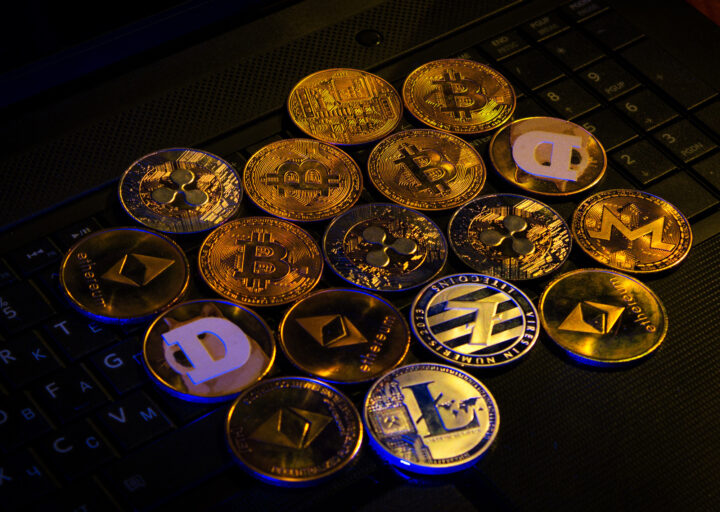Protecting your investments is your top priority as a crypto trader. It ought to be since the volatile nature of the crypto market means significant risks are always present. Who could forget the market’s steep crash in 2022, where even the strongest crypto exchange company, Bitcoin, lost over 65% of its value?
Fortunately, the market has picked up since 2023 and is expected to strengthen, leaving its dark history behind. Governments worldwide are working to regulate the market and protect investors against fraud and illicit uses. However, the principal responsibility is with the leading market players, which include platform operators, investors, and traders.
Implementing effective risk management strategies is crucial to thrive over the long term. The actionable tips below can help safeguard your capital in this complex landscape.
How crypto trading works
Crypto trading allows you to speculate on cryptocurrency price movements to earn profits. It works like traditional stock exchanges. You deposit funds with a broker and take buy and sell positions on digital assets, profiting if your trades move favourably. The activities are conducted online through mobile and desktop apps.
Top Australian Brokers
- Pepperstone - Trading education - Read our review
- IC Markets - Experienced and highly regulated - Read our review
- eToro - Social and copy trading platform - Read our review
However, unlike stocks or forex, crypto trades 24/7 as an unregulated and highly volatile market. Such a landscape carries amplified risks that can quickly compound. With prudent risk reduction techniques, your capital can avoid numerous threats.
Here are some tips to minimise crypto trading losses:
Select your platform carefully
Trading platforms can differ wildly in trustworthiness and safety features critical to managing capital risks. Dedicated hackers relentlessly probe networks for vulnerabilities, so choosing inadequate exchanges heightens the exposure of assets to theft.
Analyse account security options – robust two-factor authentication, withdrawal address whitelisting, Internet Protocol (IP) monitoring and other precautions to deter unauthorised access. Evaluate insurance coverage and custodial provisions in case of company failure.
Research thoroughly before transferring substantial sums. If you’re trading Down Under, only consider the top crypto trading platforms in Australia. These electronic brokerages have stringent security protocols, and there will be one suited to your investment style and trading preferences. For example, some platforms are ideal for beginners or advanced users, while others are perfect for day traders. Look for unbiased and professional reviews and determine trading fees and other charges.
Examine trading capabilities as well. Seek definitive answers to these questions when seeking the ideal exchange:
- Does the platform provide reliable performance even during high volatility?
- Does it have sufficient order types like stop losses and margin capabilities?
- Can you stake yields to offset risks?
- Does it have a strong track record uptime-wise?
- How many fiat currencies does it support?
Platform features and policy matter when safeguarding investments in a hazardous environment. Scrutinise any significant deficiencies around security or functionality before funding accounts. Consolidate holdings carefully, as shifting between platforms carries risks as well. Take time vetting before plunging capital into just any crypto exchange.
Know the key risks
While the potential upsides of crypto trading seem boundless, many dangers lurk that can quickly sink your portfolio. Familiarising yourself with the central hazards will make you a savvier market participant able to spot troubles ahead.
Key risks include:
Market volatility
Crypto valuations fluctuate wildly, with prices sometimes increasing or plunging 50% daily. Such turbulence can rapidly evaporate gains or magnify losses.
Security threats
Exchanges and wallets are prime targets for hacking, malware attacks or outright fraud. Billions have been stolen over the years.
Regulatory changes
After the crypto winter in 2022, governments worldwide started understanding the cryptocurrency landscape in the hopes of regulating the sector—including the Australian government. As authorities continue to grapple with oversight, new regulations could significantly impact valuations or restrict market access.
Asset correlations
Crypto is a nascent market, still establishing connections between assets. Many cryptos may suddenly move in lockstep in certain conditions, jeopardising diversity benefits.
With crypto’s volatility and potential threats, managing risks is mandatory for long-term survival and profitability. Failing to do so is effectively gambling, not trading.
Utilise stop losses
A stop loss is a powerful automatic way to limit downside if a trade goes against you. This pre-programmed sell order is triggered once an asset hits a predefined price threshold. Using stop losses helps to secure profits and restrict capital at risk. Position sizing is critical. Each trade should only imperil your entire account value if things go smoothly.
Here’s a quick guide to utilising stop losses effectively:
- Set stop levels below the current market price. That prevents unnecessary triggering during normal volatility.
- Adjust stops to lock in gains as the market moves in your favour.
- Use wider stops for volatile coins and tighter stops for stable assets.
- Diversify stop distances across your holdings.
Strategically using stop losses will ensure one high-risk bet can’t devastate your portfolio. Automatic sell orders enable disciplined risk reduction unavailable to purely manual traders.
Allocate across asset classes
Crypto encompasses many market sectors: stablecoins, utility tokens, privacy coins and payment cryptocurrencies, to name a few. Distributing investments over diverse crypto verticals reduces correlation and volatility in your activities.
There are also differences in how cryptocurrencies work. For instance, layer-1 blockchains, like Ethereum and Bitcoin, have smart contracts directly within the core platform. At the same time, layer-2 solutions run on parallel spaces for increased efficiency. Bitcoin, as the reserve asset, often moves independently from altcoins. They might perform differently than meme coins, which are more speculative and dependent on the support of online communities.
Analyse your crypto portfolio. Explore options in other spaces if you’re overexposed to one niche. The mantra remains – diversification smooths out risk across a basket of imperfectly correlated assets.
Hardware wallets offer critical security
Leaving significant funds on exchanges long-term is playing with fire. Several platforms have all suffered major recent hacks, reaching over $3.8bn (AUD$5.8bn) in 2022. Cold wallets are good alternatives, offering better asset control along with extensive security advantages due to the following functionalities:
- Keys are stored offline, inaccessible to online thieves.
- Simple backups if devices fail.
- Support for thousands of cryptocurrencies.
- Transactions are easily signed on the device before the broadcast.
The nominal cost is well worth the peace of mind, knowing investments reside safely in your possession. Begin migrating coins after purchase rather than allowing substantial sums to accumulate at exchanges.
Close positions before major news events
A 2023 study on the impact of news events on cryptocurrency values discovered that crypto index and individual returns increase alongside optimistic sentiments and vice versa. This means crypto price charts typically demonstrate violent reversals around project launches, protocol changes, significant company investments, regulatory rulings and celebrity endorsements gone wrong. Such news can instantly upend prevailing trends.
Savvy traders limit exposure by closing positions ahead of major announcements. Having prices reverse against open trades triggers stop losses rapidly, only for the market to resume prior direction afterwards. That leaves you forcibly stopped out at the bottom, unable to benefit from renewed momentum.
Instead, look to reopen positions after the initial volatile reaction if longer-term trends persist. Doing so avoids being chopped out falsely by knee-jerk swings around impactful headlines. Pause, but be prepared to take action so you can buy back in at better levels following shakeouts.
Master technical analysis
Interpreting price charts seems mystical to beginners, but it can be picked up through education and practice. Tracking tendencies via candlestick patterns, indicators and support/resistance grants gives advanced notice of impending shifts.
Learn to spot trend reversals, emerging breakthroughs, solidifying consolidations, and climax capitulations. Identify overbought and oversold signals hinting at explosions or sharp pullbacks. Training yourself to read charts reliably helps time entries and exits optimally, even amidst uncertainty.
Technical prowess will not eliminate risk but will serve as an essential tool for navigating turbulent waters.
Mindful trading is key
Implementing sound risk management makes crypto investing far less risky. If proper precautions are taken, the currencies’ volatility doesn’t have to spell doom for your portfolio. Navigating the risks demands disciplined strategies that protect your hard-earned capital.
Strategies around stop losses; hardware wallets and portfolio diversification stack the odds back in your favour. More importantly, diversify across assets, take prudent security measures, and utilise stop losses to restrict downsides without limiting upsides. By keeping these core danger areas in mind, you’ll be able to trade with much greater caution and care.







